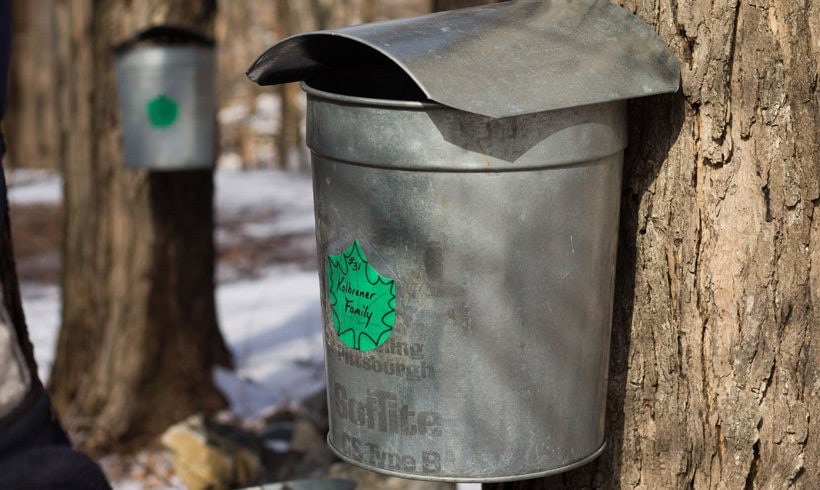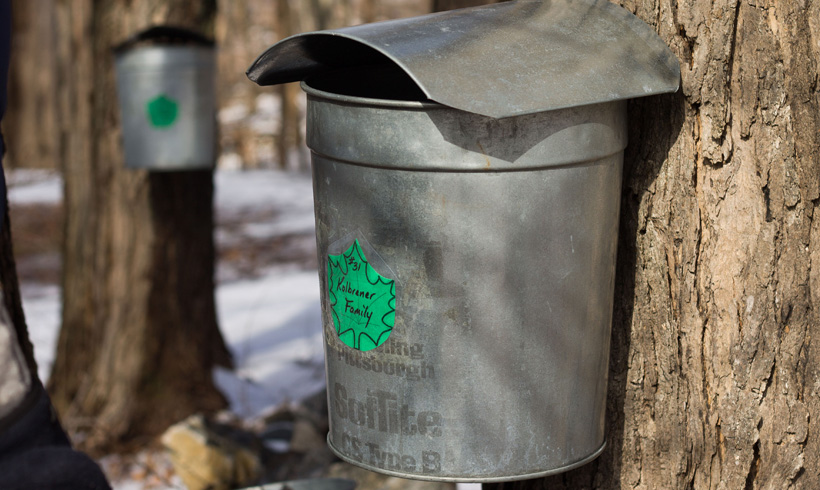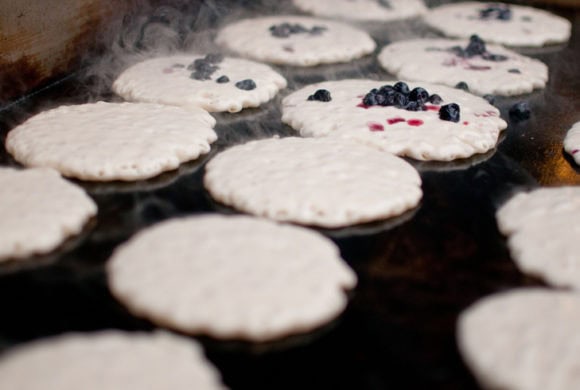
Climate change is creating a sticky situation for maple syrup producers
Changes in temperature and precipitation could spell disaster for the maple syrup industry. According to a study published last month, climate change has led to warmer and drier growing seasons that stunt the growth of sugar maples, meaning less sap production. So what does this mean for the average maple syrup consumer?
It’s late February which means it’s finally time for maple sugaring again at Teatown. Just last Thursday, our staff walked the snowy woods around the Visitor Center, carefully selecting the healthiest trees for tapping. While any species of maple will produce sap, sugar maples are the crème de la crème, so to speak, with the highest concentrations of sugar. After finding the right trees, small holes are drilled into the trunk just wide enough for tiny metal taps, or spiles, to wiggle their way in. The first drops of sugary water instantly begin to dribble out and covered buckets are quickly hung from the tap to catch the sap. A cycle of freeze and thaw from cold nights and warm days have created enough pressure to make the sap flow consistently. Soon the sugary water will be carried to the sugar shack and boiled down (it takes about 40 gallons of raw sap to make 1 gallon of syrup) until the sticky sweet syrup is ready to be poured over pancakes and shared with neighbors at our annual Pancake Brunch.
This annual tradition is more than a hobby; it’s a cultural pillar of the northeastern United States. In 2018, New York produced 806,000 gallons of the sticky stuff, second only to Vermont which amassed an impressive 1,940,000 gallons over their 52-day season. Of course this amount of syrup isn’t delivered from a few groves of hand-tapped maples. To produce at the largest scale, the maple syrup industry relies on rapidly evolving technologies, some of which quite literally suck the sap out of the trees through a network of vein-like vacuum tubing. The sap is drawn into expensive oil-fired evaporators that can cut boiling time down from 12 hours to just 30 minutes. While part of the need to increase yield is basic supply and demand, a more ominous motivator in recent years has been climate change.
Changes in temperature and precipitation could spell disaster for the maple syrup industry. According to a study published last month, climate change has led to warmer and drier growing seasons that stunt the growth of sugar maples, meaning less sap production. Another study from 2018 found that part of the problem is waning snowpack, which is needed to insulate the ground around the tree and stop the roots from freezing. Under a low-emissions scenario, snowpack could decline by 49% in the next 100 years. Under the worst climate projections, snowpack could decrease by 95%, and the entire sugar maple population throughout the mid-Atlantic region could decrease by more than 20%.
So what does this mean for the average maple syrup consumer? For now, not much. Advances in technology have offset any changes thus far, and will likely be able to do so for years to come. The real trouble will be longer-term as the conditions necessary for production begin to disappear altogether. But don’t despair, there’s plenty of syrup to go around. The sap is flowing at Teatown and we can’t imagine our pancakes without it.
Pancake Brunch
Bring your appetite for our tastiest annual tradition—the Pancake Brunch. Start your day off with stacks of hotcakes and maple syrup, hot coffee, sausages, and more. Then visit Warren’s Sugar House to watch a demonstration about how our ‘liquid gold’ is produced. For everyone.
To register, call 914-762-2912 x110.



